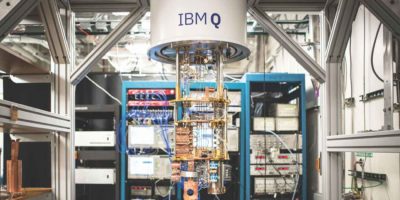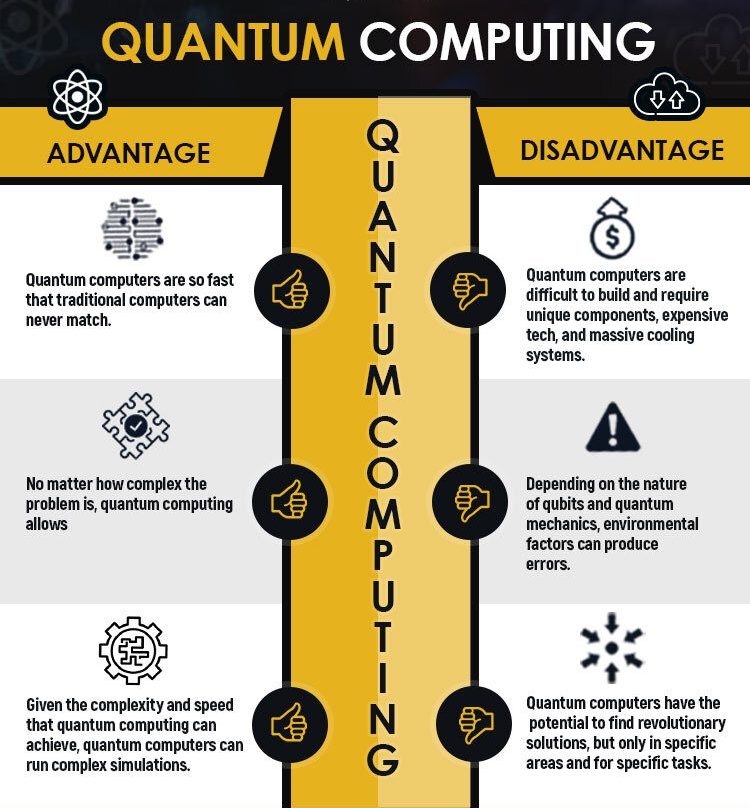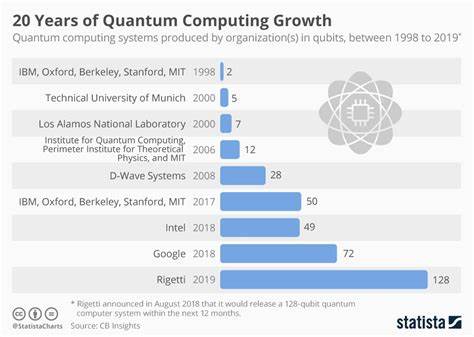
Quantum Computing in Smart Building Analytics: Revolutionizing Optimization
Introduction
In the era of digital transformation, quantum computing has emerged as a groundbreaking technology with vast potential. This article explores the intersection of quantum computing and smart building analytics, offering insights into how this fusion can revolutionize the optimization of building performance. By harnessing the power of quantum mechanics, quantum computing holds the promise of solving complex problems that classical computers struggle to address efficiently. The integration of quantum computing in smart building analytics has the potential to unlock new frontiers in optimizing energy usage, predictive maintenance, and resource allocation.
Historical Background
To understand the significance of quantum computing in smart building analytics, it is essential to delve into its historical background. Quantum computing traces its roots back to the early 1980s when Nobel laureate Richard Feynman first proposed the idea of harnessing quantum mechanics for computational purposes. Over the years, scientists and researchers have made remarkable strides in developing the principles and technologies that underpin quantum computing.
On the other hand, smart building analytics has evolved alongside advancements in data analytics and the Internet of Things (IoT). The integration of sensors, meters, and other monitoring devices has enabled the collection of vast amounts of real-time data from buildings. This data serves as the foundation for optimizing building performance, reducing energy consumption, and improving occupants’ comfort.

Key Concepts and Definitions
To comprehend the potential impact of quantum computing on smart building analytics, it is crucial to define and understand both concepts. Quantum computing refers to a computing paradigm that leverages quantum mechanical phenomena, such as superposition and entanglement, to perform calculations. Unlike classical bits, quantum bits, or qubits, can exist in multiple states simultaneously, allowing for complex computations to be performed exponentially faster.
Smart building analytics, on the other hand, involves the use of advanced data analytics techniques to optimize building performance. It encompasses the analysis of various data sources, including energy consumption data, occupancy patterns, and environmental conditions, to identify areas for improvement and enhance energy efficiency.
The intersection of quantum computing and smart building analytics opens up new possibilities for optimizing building performance by leveraging the immense computational power of quantum computers.
Main Discussion Points
Point: Quantum Computing Fundamentals
Quantum computing relies on the principles of quantum mechanics to revolutionize traditional computing methods. Unlike classical computers, which utilize bits that can represent either a 0 or a 1, quantum computers employ qubits that can represent both 0 and 1 simultaneously. This phenomenon, known as superposition, allows quantum computers to perform multiple calculations simultaneously, offering exponential computational speedups.
Additionally, quantum computing harnesses the power of quantum gates, which manipulate the quantum states of qubits. These gates enable complex quantum operations, such as entanglement, which enables the correlation of qubits’ states, regardless of their physical separation. By leveraging these fundamental principles, quantum computing has the potential to solve computational problems that are currently intractable for classical computers.

Point: Smart Building Analytics
Smart building analytics aims to optimize energy usage, improve occupant comfort, and reduce operational costs. It involves the analysis of diverse data sources, including sensor readings, energy consumption patterns, and environmental data, to gain insights into a building’s performance.
The data used in smart building analytics can be sourced from various sensors, including those monitoring temperature, humidity, occupancy, and energy consumption. Advanced data analytics techniques, such as machine learning algorithms and statistical models, are employed to derive actionable insights from this data. These insights enable facility managers to make data-driven decisions and implement strategies to enhance building performance.
Point: Integration of Quantum Computing and Smart Building Analytics
The integration of quantum computing in smart building analytics holds tremendous potential for optimizing building performance. Quantum computing’s ability to perform complex calculations exponentially faster than classical computers can significantly enhance the analysis and optimization of building systems.
By leveraging quantum computing’s computational power, smart building analytics can process vast amounts of data in real-time, enabling more accurate predictions and optimizing building performance. For example, quantum algorithms can streamline energy allocation, predictive maintenance, and demand-response strategies, leading to reduced energy consumption and cost savings.
However, integrating quantum computing into smart building analytics comes with its challenges. Quantum computers are still in the early stages of development, and practical applications are limited. Additionally, the complexity of quantum algorithms and the specialized knowledge required pose barriers to widespread adoption. Nevertheless, as quantum computing technology advances, the potential applications in optimizing building performance are vast.
Case Studies or Examples
Real-world examples of quantum computing in smart building analytics showcase the tangible impact of this fusion. In one case, a commercial building incorporated a quantum-based optimization algorithm to reduce its energy consumption. By considering various factors, such as occupancy patterns, weather conditions, and equipment efficiency, the quantum algorithm optimized the building’s HVAC system, resulting in significant energy savings.
Another example involves using quantum computing to optimize predictive maintenance in a manufacturing facility. By analyzing sensor data from critical equipment and performing complex calculations, quantum algorithms can predict maintenance needs more accurately, reducing downtime and increasing operational efficiency.
Current Trends or Developments
The field of quantum computing and smart building analytics is rapidly evolving, with new trends and developments shaping its future. Researchers are exploring quantum machine learning algorithms that can leverage the power of quantum computers to enhance predictive analytics in smart buildings. Additionally, advancements in quantum error correction and qubit coherence are crucial for building reliable and scalable quantum computing systems for practical use.

Moreover, the integration of quantum sensors that leverage quantum effects for ultra-high precision measurements has the potential to enhance data acquisition and enable more accurate modeling of building systems.
Challenges or Controversies
Implementing quantum computing in smart building analytics is not without its challenges. One fundamental challenge is the limited availability of practical quantum computers. Quantum computers operate under strict environmental conditions and require specialized infrastructure, making them inaccessible for many organizations.
Furthermore, the complexity and novelty of quantum algorithms pose a challenge in terms of expertise and training. As quantum computing technology advances, there is an ongoing debate regarding the ethical and security implications of quantum computing in the context of smart building analytics.
Future Outlook
The future implications of quantum computing in smart building analytics are vast. As quantum computers become more accessible, the optimization of building performance will witness a paradigm shift. Quantum algorithms will enable more accurate predictions, improved energy efficiency, and enhanced occupant comfort.
Emerging technologies, such as quantum sensors and quantum machine learning algorithms, will further enhance the capabilities of smart building analytics. These developments will enable the creation of autonomous buildings that can adapt dynamically to changing environmental and occupancy conditions, leading to sustainable and energy-efficient structures.
Conclusion
Quantum computing’s integration in smart building analytics presents a transformative opportunity to revolutionize building performance optimization. By harnessing quantum mechanics, quantum computing offers unparalleled computational power, enabling the analysis and optimization of building systems at an unprecedented scale. Although challenges remain, the potential benefits of this fusion are immense, ranging from significant energy savings to enhanced occupant comfort. As the field of quantum computing progresses, the future of smart building analytics holds the promise of a sustainable and intelligent built environment.




